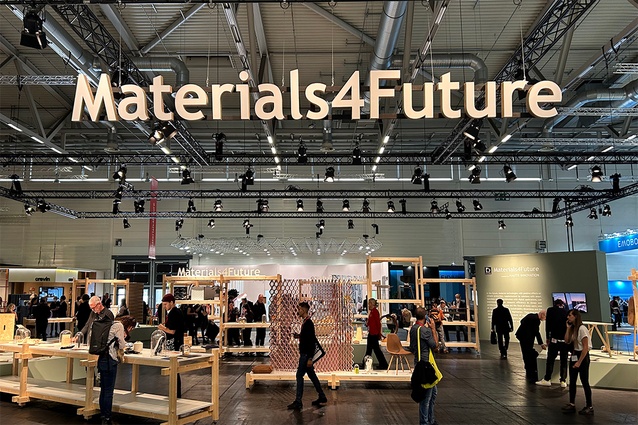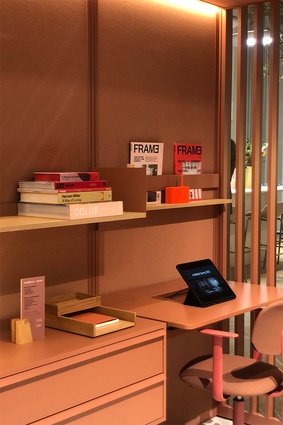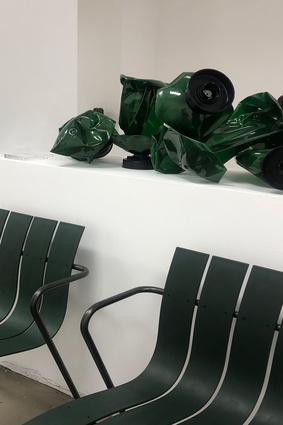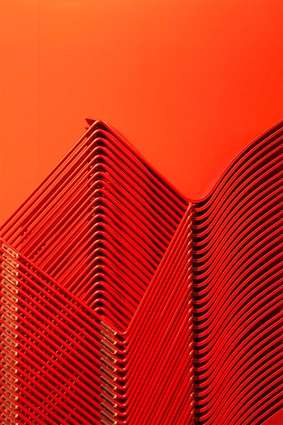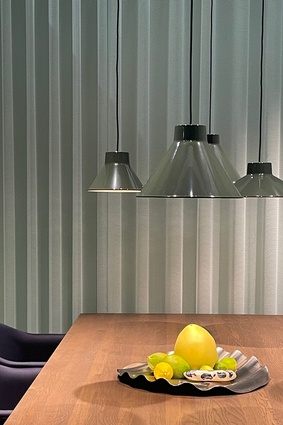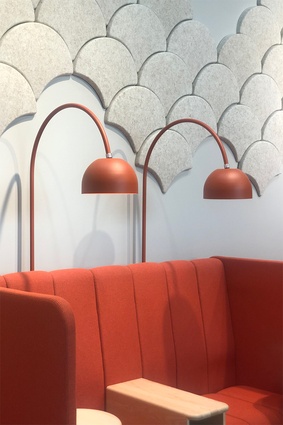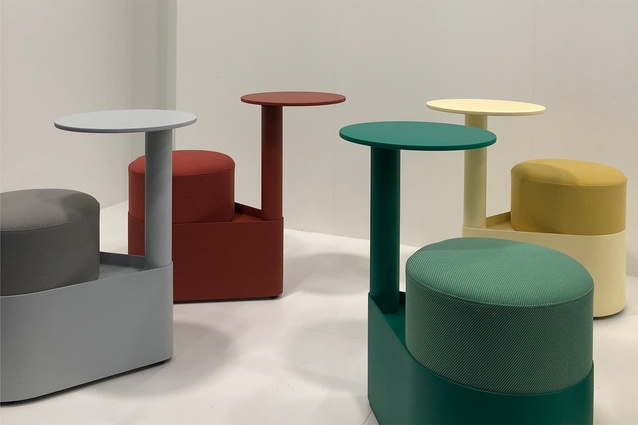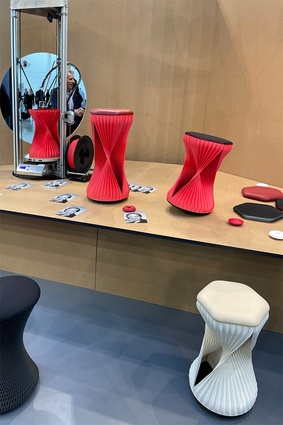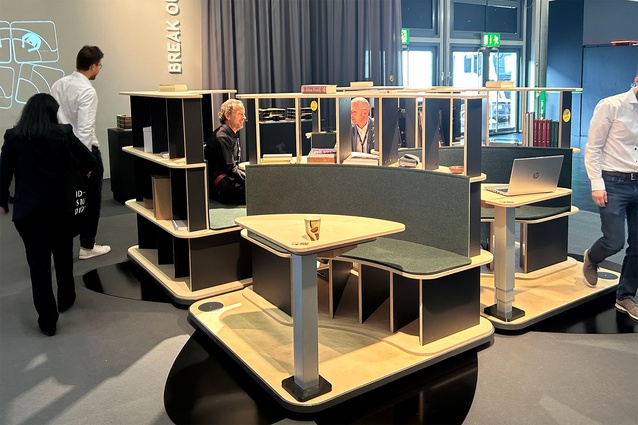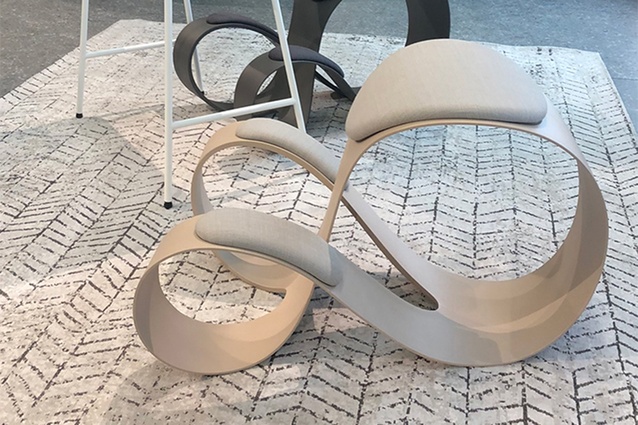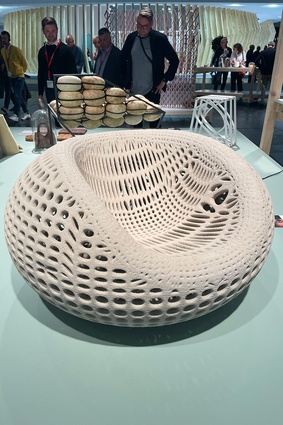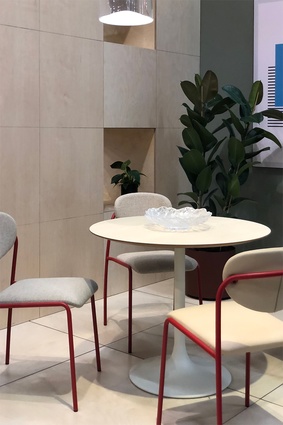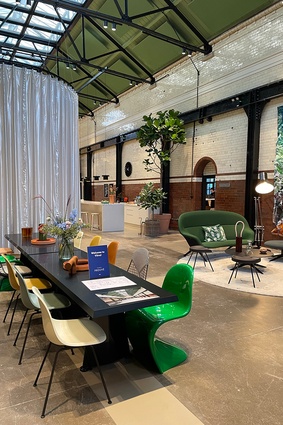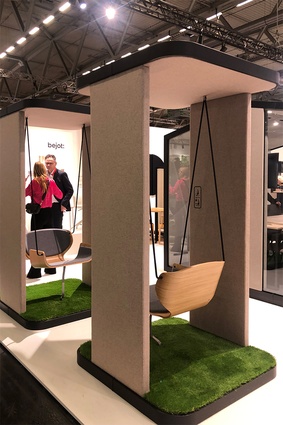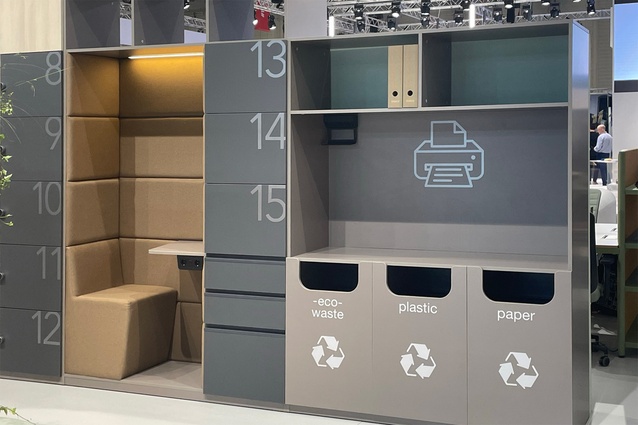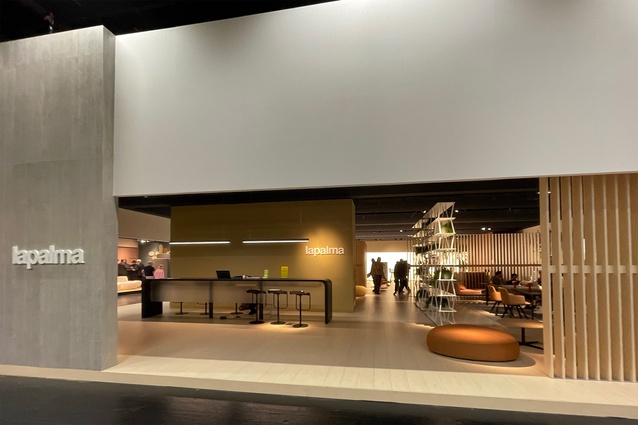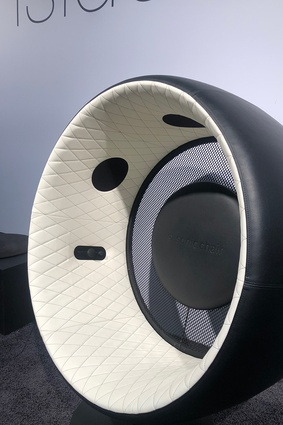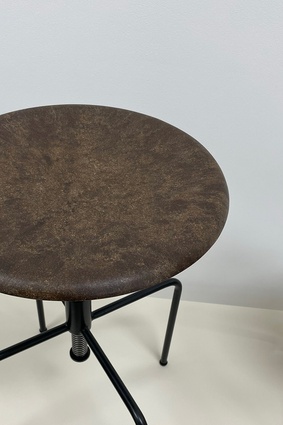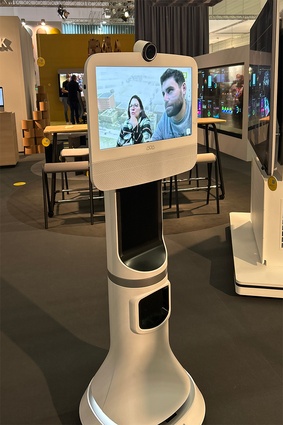New Visions of Work: Orgatec 2022
What constitutes a good workplace and, furthermore, a healthy and effective one, has been questioned in recent years. Changing needs triggered by the pandemic have prompted a rapidly evolving workplace design revolution that is taking place in real-time the world over. Four members of the Wingate Architects team travelled to the Orgatec trade fair in Cologne, named ‘New Visions of Work,’ to discover what designers and researchers have created for the future of office design.
A well-known New Zealander once sang that “Colour is its own reward.” Whilst Neil Finn may not have been directly referencing future workplace furniture solutions in the Crowded House song ‘Fingers of Love’ (1993), the sentiment that colour generates the rewards of positivity, wellness and balance – and even makes you smile – was palpable as we joined over 45,000 visitors from 130 counties at the exceptional, crafted, inspirational trade stands at the Orgatec furniture show in Cologne, Germany, in October this year.
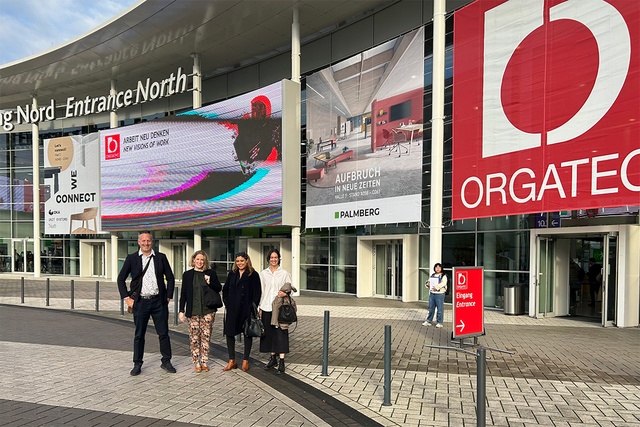
Our group of four interior design specialists — Sarah Bryant, Chantal Gaiqui, Natasha Baumgartner and David Maurice — saw this trip as a great opportunity to understand what new and innovative insights could be applied to, and add value to, future projects; each having a strong track record of delivering innovative interior solutions to Wingate’s clients across its locations in Auckland, Hamilton and Tauranga.
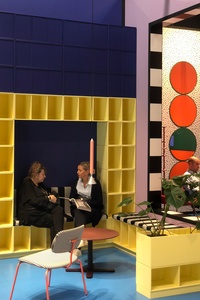
With the 2020 event cancelled due to the impact of Covid, it had been a number of years since leading names in the global furniture industry had been able to assemble at the Koelnmesse – the impressive international trade and fair exhibition in Cologne – to showcase their concepts, ideas and new products for workplace interiors.
Despite the challenges of jet lag, some of us arrived immediately from the 32-hour journey from Auckland to the welcome noise of loud networking, the smell of coffee and the clinks of German pilsner glasses.
The overall theme of the week was ‘New Visions of Work’, and across the numerous halls, exhibitors from all over the world showcased their particular take on how the immediate future of the workplace was developing. As well as the dominant impact of colours, the themes of flexibility, sustainability, wellbeing, seamless tech and creating holistic experiences that improve productivity and balance came through strongly.
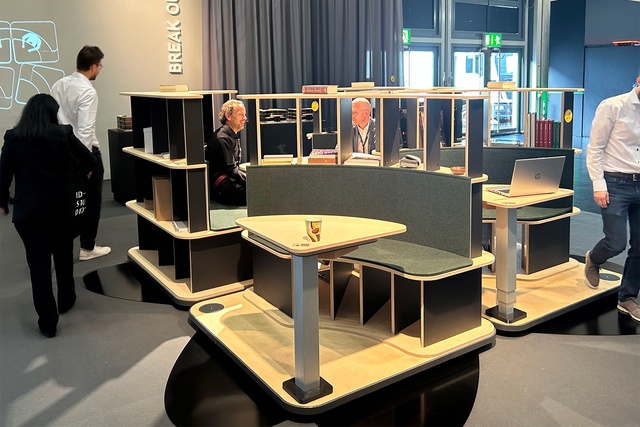
Inspired hybrid working

Within the ‘New Visions of Work’ theme was the refreshed concept of ‘inspired hybrid working’ – a theme that aimed to contribute to the conversations we and our peers are regularly holding with both clients and industry around the hybrid workplace model.
This was presented in Hall 8 where themed sections formed around a central ‘town square’ of a typical workplace, provided 360-degree views of each subject area. Each area within these sections looked at how the concepts of an inspired hybrid workplace might present themselves.
“A clear direction amongst all exhibitors was that the future workplace could only inspire and motivate if a true balance between work and life was achieved.”
Within the hot desk and collaboration areas, mobile robots with screens displaying virtual meetings approached you, allowing the opportunity for interactive meetings with offsite colleagues to feel almost as normal. Underpinning every exhibit was the message to promote and ensure the prioritisation of wellness, and mental and physical health.
A clear direction amongst all exhibitors was that the future workplace could only inspire and motivate if a true balance between work and life was achieved. Areas for virtual reality ‘mind baths’ sat adjacent to the collaboration, focus zones and quasi-work-from-home setups.
Sustainability and innovation in materiality
Topping the agenda in Hall 8, and carrying through much of the exhibition, was the conversation around sustainability and innovative approaches to materiality. While this is a constant theme in everything we do as an industry, we were struck by the strong focus on sustainability at Orgatec, with so many of the products shown utilising innovative materials. Indeed, in Hall 6 we were fascinated by the specially curated ‘Materials4Future’ area by Haute Innovation, which showcased a range of material solutions from various designers driven by sustainability.
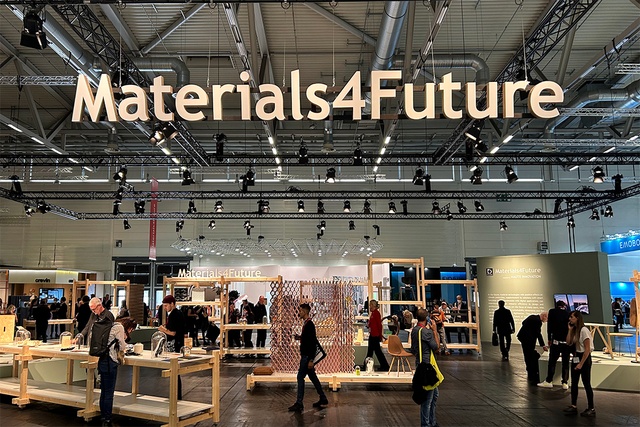
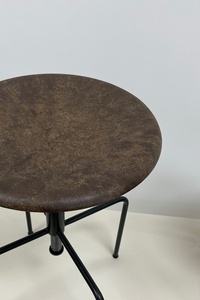
A prolific number of products on show used climate-friendly materials that had manufacturing processes which reduced CO2 emissions or were climate-neutral. The use of waste products to create new materials and an emphasis on the circular economy, greater after-purchase care and servicing of products to increase longevity were everpresent.
“Imagine sitting on a chair in a café that was made from the coffee grinds knocked at the counter, or drinking from your beer and realising the chair you’re sitting on is made from Carlsberg kegs – a reminder of how innovation can excite…”
In nearly every conversation had and presentation we saw, sustainability felt as though it was a given. No one was trying to be sustainable, they were just doing it. People were already looking beyond sustainability, at how they could create even more innovative and futuristic solutions.
Many furniture companies had put years of research into creating new materials that combined recycled plastic with items such as timber by-products or coffee grounds. Imagine sitting on a chair in a café that was made from the coffee grinds knocked at the counter, or drinking from your beer and realising the chair you’re sitting on is made from Carlsberg kegs – a reminder of how innovation can excite, challenge the ordinary, and become a core part of the product story.
Wellness/wellbeing
Complementing the sustainability focus was a huge desire to highlight the need to promote the benefits of a healthy workplace – both in a physical and mental health context. Conversations around health are integral to all workplace strategies these days and even more so since the pandemic. People are working longer hours and the lines between home and work have blurred substantially.
Several exhibitors were showcasing products designed to alleviate many of the health implications that our working habits are creating. Examples of combining acoustic technology with furniture design to create immersive experiences supporting both wellbeing and concentration were regularly seen throughout the halls.
“Conversations around health are integral to all workplace strategies these days and even more so since the pandemic. People are working longer hours and the lines between home and work have blurred substantially.”
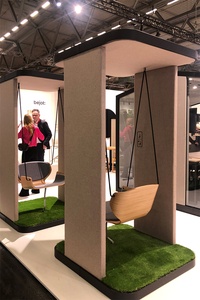
Another key theme that came through was wellness through movement, where the design of workplace furniture incorporated physiotherapy techniques and encouraged micro movement throughout the day — whether at a desk or indeed any work point. Along with stimulating the body and the mind, the idea that movement could inspire creativity through the play of furniture that can swing, rock, swivel or roll, was found to relax or inspire different ways of thinking.
A seminar by Phillip Paré (Managing Director Gensler Paris) on ‘Next wave wellness amenities: antidote to anxiety, purveyors of purpose’ particularly struck a chord. He suggested that there is no one-size-fits-all approach to wellness and it should be deeply responsive to an organisation’s culture, people and values. Designing for mental health, neurodiversity and creating happier, healthier and more productive workplaces for everyone is key. By designing at “the edges”, (i.e. taking into account fringe-culture and minority use-cases), we are designing for everyone thereby creating a broader spectrum of experiences. The next wave of wellness should be embedded in inclusivity and community.
Flexibility
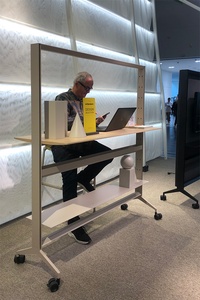
In the ever-changing world of the workplace, it is becoming apparent that spaces need to flex, change and adapt at a rapid pace. The ability to move furniture and reconfigure it seamlessly and efficiently is key for an effective workplace.
There were numerous pieces on castors and we were regularly treated to the delight of real-time demonstration with furniture that transformed to create multiple solutions utilising a series of moving components.
Key presentations
There were opportunities to hear from other exceptional global thought leaders in the world of workplace design through a number of organised talks. One such talk by Robert Thiemann, Director @Frame detailed his ‘Principles for future of space,’ providing five topics for consideration:
- Creating meaningful/memorable/multi-sensory experiences
- Prioritising people’s health/wellbeing/comfort
- Involving users’ communities – co-creation
- Building in agility to anticipate changing needs
- Minimising environmental impact
Thiemann offered the view that a hybrid office was becoming normal, however, it needed a more holistic approach to its design (i.e. encompassing a wider range of workers’ social and innate needs). He sees workforce priorities shifting towards work/life balance plus health and wellbeing and believes that a dynamic workplace needs to be flexible, sustainable and provide wellbeing – but with less ownership. Noting, also, that wellness looks different for everyone and that inclusive environments are wellness environments.
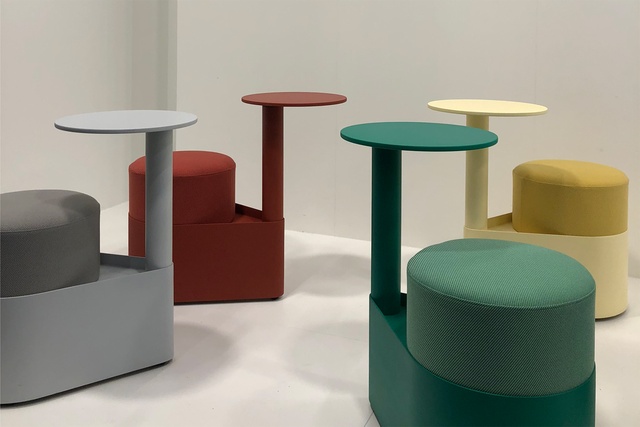
Colour

The use of colour was so prevalent throughout the exhibition that any stand that didn’t embrace it felt out of touch.
Some of the team had visited the Vitra Campus a few days previously and noted that bold and vibrant uses of colours are back. Spaces that were previously sorted by date were now ordered by colour.
Trends we noted were that all colours across the exhibits were very bold, much more so than what we are seeing presently in New Zealand. (Think bold reds, yellows and blues). Earthy tones were also seen frequently — terracotta tones in particular. Something new we noted was the use of colour-on-colour. Here, colour was used as a statement rather than just as an accent.
At Orgatec, this theme continued to be emphasised further. DUM took out the Best Use of Colour Award – using it in full effect by laying space out by hue. Muuto followed this method of organisation through bold spaces organised by colour, using warm terracotta tones.
Our reward
It would be fair to say that we left Cologne with much more than “Colour as a reward”. Our Orgatec experience was profoundly inspirational, fuelled by ideas and the odd coffee and German pilsner. With brightly-tinted glasses now removed, it’s fair to say that our ‘visions of new work’ are still in vibrant colour and that we are motivated, reassured and fuelled with new ideas to bring deeper conversations about wellness, inclusivity and circular sustainability to the industry and our clients, and to really challenge what the inspired hybrid workplace can look like in our corner of the world. We look forward to continuing to evolve and explore all that we were grateful to experience.
Wingate Architects (est. 2004 ) is a multidisciplinary design practice across three studios specialising in built design, commercial architecture, workplace strategy and interiors with a strong focus on collaboration and innovation.
Orgatec is the largest biennial trade fair for modern working environments in the developed world. For more information on the 2022 fair, or for future trade shows, head to their website.

